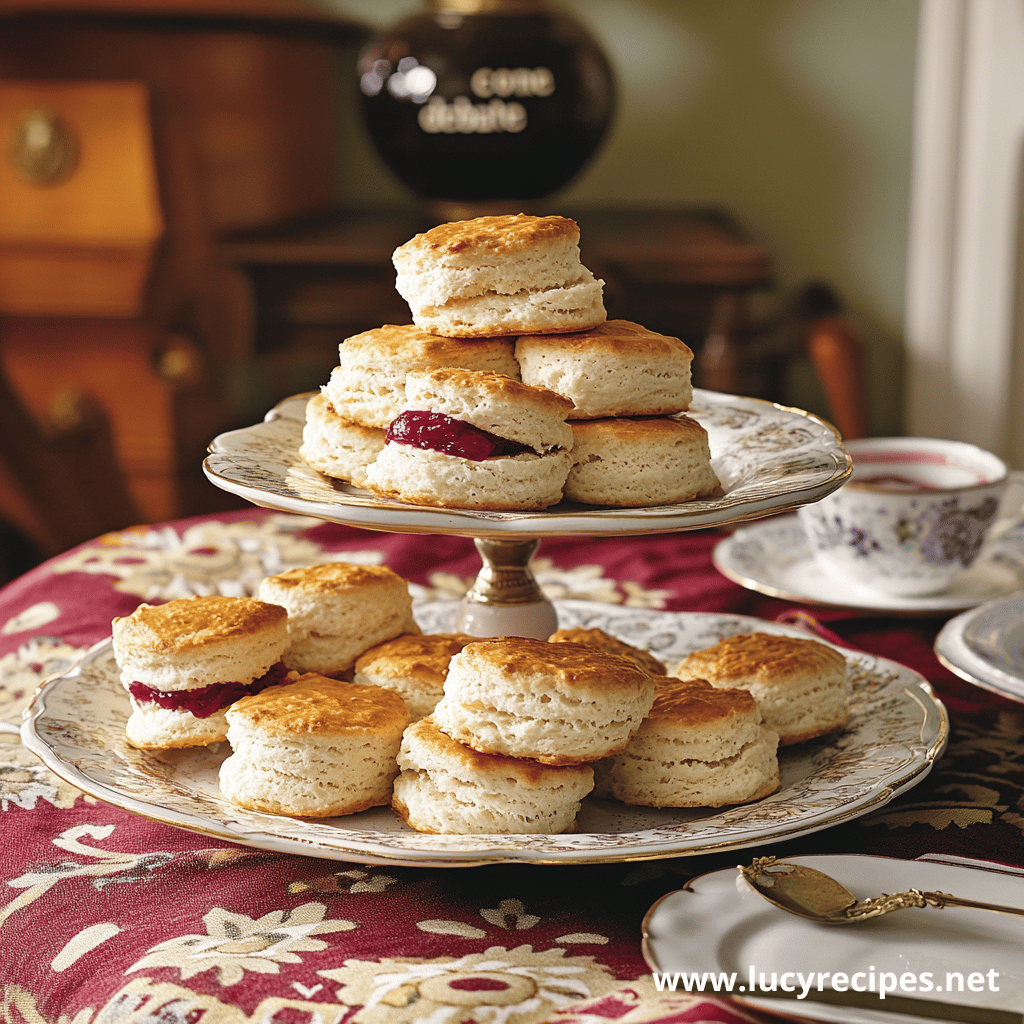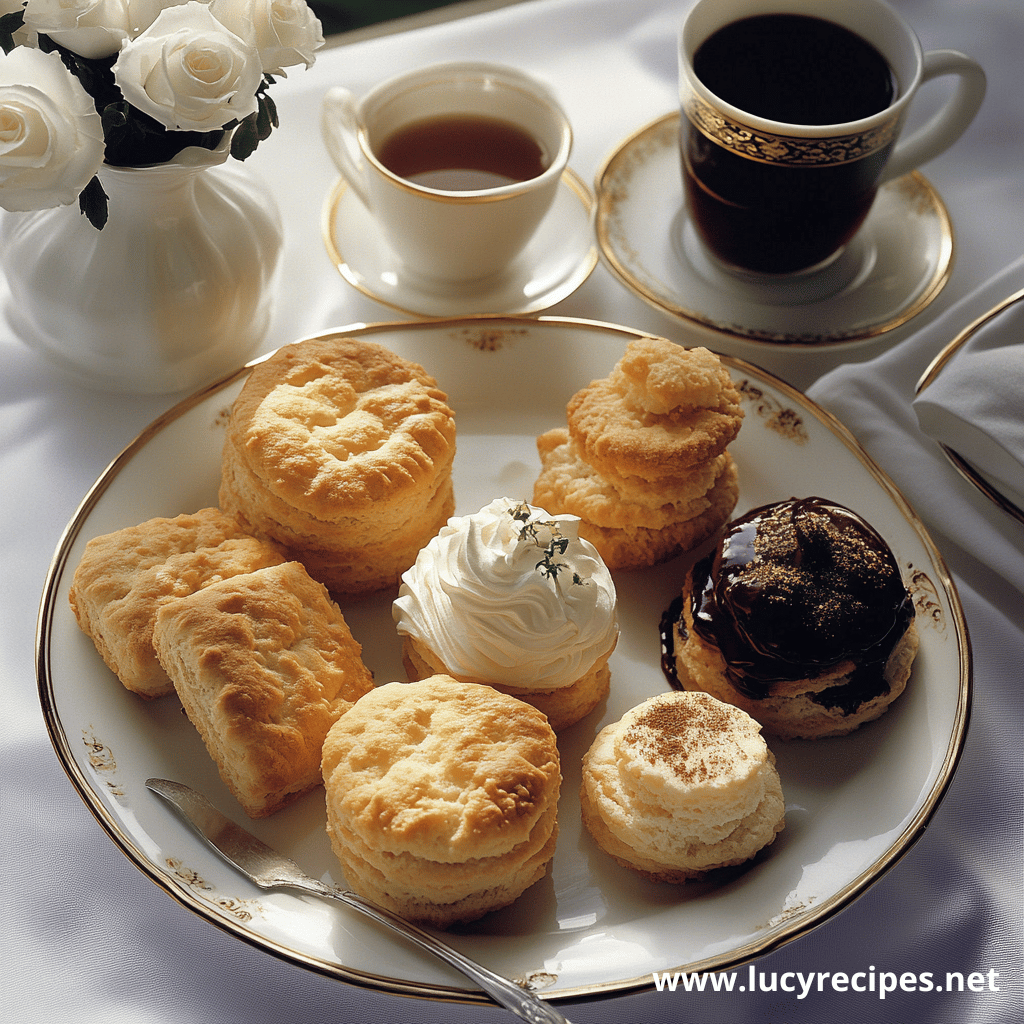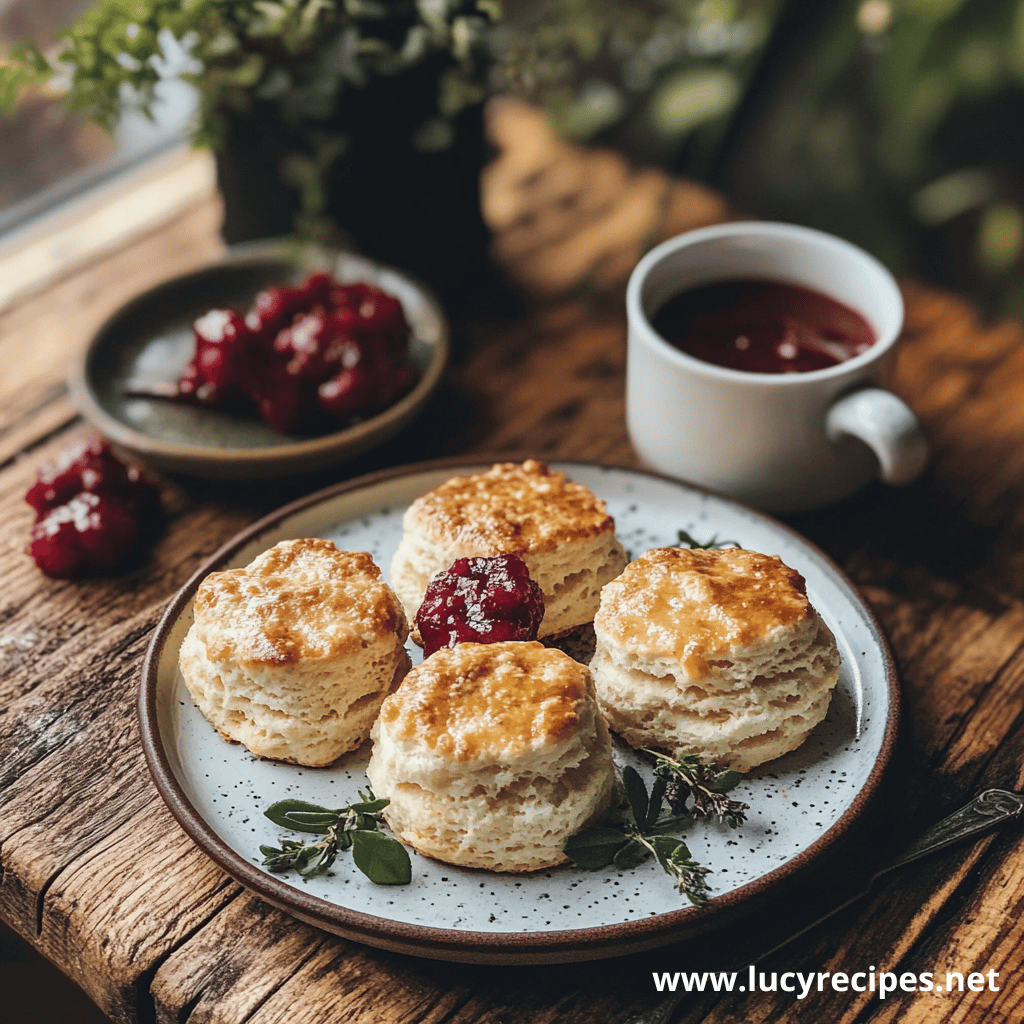Introduction
In the culinary world, buttermilk biscuits hold a cherished place in American cuisine. Known for their flaky texture and savory taste, these treats are often associated with hearty meals and comforting flavors. However, have you ever wondered what the English name for buttermilk biscuits is? When crossing into British territory, this term can spark confusion. In this article, we’ll explore the cultural and linguistic differences, delve into their significance, and uncover what makes these delicacies so beloved in different parts of the world.
Table of Contents
Understanding Buttermilk Biscuits in American Cuisine
Buttermilk biscuits, a staple in the Southern United States, are a far cry from the crisp, sweet treats the English might associate with the term “biscuit.” Instead, they are fluffy, savory, and light, making them a unique bread option. If you’ve ever wondered about the English name for buttermilk biscuits, you might be surprised to learn that they don’t have an exact equivalent in British cuisine.
Key features of American buttermilk biscuits include:
- Flaky layers achieved through the lamination process.
- A rich, tangy flavor from the buttermilk.
- Quick preparation time, making them a favorite for home cooks.
Made with a simple combination of flour, butter, and buttermilk, these biscuits bake up tender and airy. Their versatility allows them to pair seamlessly with both savory dishes like fried chicken and gravy or sweet creations such as shortcakes.
To dive deeper into recipes that highlight this flaky texture, explore our guide on Butter Biscuits for Christmas for festive variations.
The British Perspective: What Are Buttermilk Biscuits Known As?
In the UK, the term “biscuit” refers to what Americans would call a “cookie,” which raises the question: What is the English name for buttermilk biscuits? The closest equivalent would be “scones,” though they are not entirely the same.
While scones and buttermilk biscuits share some similarities, such as their round shape and leavened dough, they also have notable differences:
- Texture: British scones are denser and slightly crumbly, whereas buttermilk biscuits are airy and flaky.
- Ingredients: Scones often include sugar and are sweeter, while buttermilk biscuits lean savory.
- Usage: Scones are traditionally served with tea and jam, whereas biscuits complement hearty meals.
By understanding these nuances, it becomes evident why the terminology surrounding these baked goods can be so confusing across cultures.
For an in-depth comparison of butter biscuits versus shortbread, check out Butter Biscuits vs. Shortbread: Key Differences, Recipes, and Tips.
How Do English People Serve “Buttermilk Biscuits”?
When incorporating buttermilk biscuits into British dining, their presentation adapts to align with local customs, which can raise questions about the English name for buttermilk biscuits. Although they are most similar to scones in British cuisine, their uses vary widely.
Instead of pairing them with gravy, English people might:
- Serve them with clotted cream and jam, mimicking the traditional way scones are enjoyed.
- Pair them with savory spreads like cheese or chutney for a teatime snack.
- Use them as a base for hearty dishes like meat pies or casseroles.
While these serving styles differ from their American origins, they highlight the versatility of buttermilk biscuits and how seamlessly they can integrate into various cuisines.
Learn more about their rich tradition in Classic Old-Fashioned Thanksgiving Dressing Recipe to see how similar staples play into holiday meals.
Cultural Significance of Biscuits and Scones in the UK and US

In both the US and the UK, these baked goods carry cultural weight, representing comfort and tradition.
In the US, buttermilk biscuits are deeply rooted in Southern culture, with family recipes passed down through generations. They symbolize hospitality and play a starring role in holiday meals and Sunday dinners.
Across the pond in the UK, scones take center stage during afternoon tea, epitomizing British refinement and tradition. The enduring “scone debate”—from pronunciation to whether cream or jam comes first—further underscores their cultural significance.
Despite their differences, both countries’ versions evoke a sense of nostalgia and community, underscoring the universal appeal of baked goods.
The Science Behind Biscuit and Scone Textures
The contrasting textures of buttermilk biscuits and scones arise from variations in ingredients and preparation methods.
Key Factors Influencing Texture:
- Fat Distribution:
- In buttermilk biscuits, cold butter is cut into the flour, creating pockets that expand during baking for a flaky texture.
- Scones use softened butter, resulting in a more crumbly consistency.
- Leavening Agents:
- American biscuits rely on baking powder and baking soda, which interact with buttermilk for a light, airy rise.
- Scones often include eggs, adding density and richness.
- Kneading and Mixing:
- Minimal handling of biscuit dough prevents gluten development, ensuring tenderness.
- Scone dough is mixed slightly more, contributing to its firmer structure.
Understanding these scientific principles allows bakers to achieve the desired texture for either treat.
Variations of Buttermilk Biscuits Around the World
While buttermilk biscuits are quintessentially American, similar baked goods can be found in other cultures, reflecting a global appreciation for comforting pastries. This raises an interesting question about the English name for buttermilk biscuits, as there isn’t a direct equivalent in many cuisines.
Examples of Regional Variations:
- British Scones: Often include raisins or currants and are paired with tea.
- Australian Damper: A simple, campfire bread with a texture similar to biscuits.
- French Gougères: Cheese-filled pastries that share the lightness of buttermilk biscuits.
- Indian Nankhatai: Though more like cookies, their buttery flavor and crumbly texture draw parallels.
These variations highlight how different cultures adapt flour-based recipes to suit their local tastes and traditions.
How to Make the Perfect Buttermilk Biscuit
Creating the ideal buttermilk biscuit requires attention to detail and the right techniques. Here’s a step-by-step guide:
Ingredients:
- 2 cups all-purpose flour
- 1 tablespoon baking powder
- 1/2 teaspoon baking soda
- 1 teaspoon salt
- 6 tablespoons cold butter (cubed)
- 3/4 cup buttermilk (chilled)
Instructions:
- Preheat Oven: Set to 425°F (220°C).
- Mix Dry Ingredients: Combine flour, baking powder, baking soda, and salt in a large bowl.
- Incorporate Butter: Cut in cold butter until the mixture resembles coarse crumbs.
- Add Buttermilk: Gradually stir in buttermilk, mixing until a soft dough forms.
- Shape Dough: Turn the dough onto a floured surface, gently knead, and roll to about 1-inch thickness.
- Cut Biscuits: Use a round cutter to shape biscuits, avoiding twisting the cutter.
- Bake: Place biscuits on a baking sheet and bake for 12-15 minutes until golden brown.
Tips for Success:
- Keep ingredients cold to achieve flaky layers.
- Avoid overworking the dough to prevent toughness.
- Brush the tops with melted butter for added flavor.
By mastering these techniques, you can create biscuits that rival those found in the heart of the American South.
The Influence of Regional Ingredients on Biscuit Recipes
The ingredients used in biscuit recipes vary widely depending on regional availability and preferences, leading to unique flavors and textures across cultures. This diversity often prompts the question: What is the English name for buttermilk biscuits? The answer frequently points to “scones,” though the two are distinct.
The American South
In the southern United States, buttermilk biscuits are iconic. Soft wheat flour, abundant in the region, creates a tender texture, while buttermilk’s tangy flavor enhances the overall taste.
The United Kingdom
When considering the English name for buttermilk biscuits, British scones come to mind. These often include double cream or eggs, resulting in a richer, denser bake. Regional variations might also incorporate dried fruits or spices.
European Variations
In France, similar pastries like gougères highlight the influence of regional cheeses. Meanwhile, in Eastern Europe, savory biscuits might feature herbs and sour cream for a unique twist.
Adapting to Local Ingredients
Home bakers can experiment by substituting local ingredients, such as yogurt instead of buttermilk or coconut oil for butter, to reflect regional tastes while maintaining quality.
Pairing Biscuits and Scones with Beverages

The right beverage can elevate the experience of enjoying biscuits and scones. Pairing takes into account the flavor profiles and cultural context of these baked goods.
Classic Pairings
- Biscuits: In the U.S., biscuits are commonly served with coffee or sweet tea. Their savory nature complements these beverages beautifully.
- Scones: In the UK, scones are traditionally paired with tea, often as part of a full afternoon tea experience.
Creative Combinations
- For sweeter biscuits, such as those used in shortcakes, pair them with hot chocolate or spiced cider.
- Herb-infused scones, like rosemary or thyme, go well with earthy green teas or light white wines.
Regional Preferences
- In Australia, damper-style biscuits might be paired with a robust black tea.
- European pastries often accompany espresso or cappuccino, highlighting their richness.
Pairing thoughtfully can transform a simple snack into a luxurious treat.
Healthier Alternatives for Biscuits and Scones
With the growing emphasis on healthier eating, many bakers seek to modify traditional biscuit and scone recipes to reduce calories or boost nutritional value without compromising taste. These adaptations can also be applied when exploring the English Name For Buttermilk Biscuits and their healthier variations.
Substituting Ingredients
- Replace white flour with whole wheat flour for added fiber.
- Use Greek yogurt instead of cream or buttermilk to reduce fat while maintaining moisture.
- Opt for natural sweeteners, like honey or maple syrup, instead of refined sugar.
Reducing Fat Content
- Swap butter for avocado or coconut oil to reduce saturated fat.
- Use a non-stick baking mat to avoid additional oil or butter during baking.
Adding Nutritional Value
- Incorporate seeds like chia or flax for added omega-3s and fiber.
- Add grated vegetables, such as zucchini or carrots, for moisture and nutrients.
By making small adjustments, traditional recipes, including those inspired by the English Name For Buttermilk Biscuits, can become more health-conscious while still delivering great flavor.
Exploring Gluten-Free Biscuit Options
Gluten-free baking has grown in popularity as more people adopt gluten-free diets due to allergies or personal preferences. These techniques can also be adapted when exploring the English Name For Buttermilk Biscuits and their gluten-free variations. Making buttermilk biscuits without gluten requires specific techniques and ingredients.
Choosing the Right Flour
- Use gluten-free flour blends that include a mix of rice flour, potato starch, and tapioca starch.
- For added flavor, incorporate almond or coconut flour into the blend.
Handling Gluten-Free Dough
- Gluten-free dough is typically more delicate, so handle it gently and avoid overworking.
- Adding a binder, such as xanthan gum or psyllium husk, improves texture and structure.
Baking Tips
- Refrigerate the dough before baking to help it firm up and maintain its shape.
- Bake at a slightly lower temperature to prevent over-browning while ensuring thorough cooking.
By mastering these techniques, gluten-free biscuits, including variations inspired by the English Name For Buttermilk Biscuits, can achieve a texture and taste comparable to traditional versions.
FAQs
1. What do English people call buttermilk biscuits?
In the UK, buttermilk biscuits are most similar to scones. While they share some similarities, scones are denser and sweeter, often enjoyed with tea.
2. How do British scones differ from American biscuits?
British scones are richer, typically including eggs and sugar, while American biscuits are flakier and primarily savory.
3. Can you use buttermilk in British scone recipes?
Yes, buttermilk can replace regular milk or cream in scone recipes to add tanginess and tenderness.
4. Why are buttermilk biscuits not common in the UK?
The UK’s culinary tradition leans more toward scones, which are culturally tied to afternoon tea. Biscuits, as known in the US, don’t align with traditional British meal pairings.
5. What beverage pairs best with buttermilk biscuits in the UK?
While tea is a classic choice, savory buttermilk biscuits can also pair well with coffee or even a light beer, depending on the occasion.
Conclusion
Understanding the distinctions between buttermilk biscuits and their counterparts across the globe, such as British scones, opens up a fascinating exploration of cultural and culinary diversity. The question, What do English people call buttermilk biscuits?, and the search for the English Name For Buttermilk Biscuits lead us to appreciate not only the terminologies but also the shared love for baked goods. Whether experimenting with healthier recipes, exploring gluten-free options, or pairing biscuits and scones with beverages, the versatility of these treats ensures their enduring popularity. By mastering the techniques and embracing creativity, bakers can enjoy the best of both worlds while honoring the unique traditions of each region.

